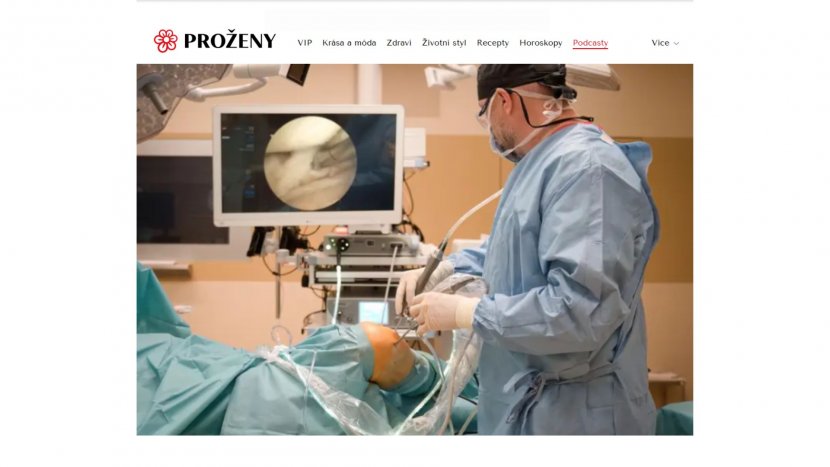The less blood, the better. I guess that's the essence of arthroscopy. The range of procedures that can be performed through just a few small holes in the body is wide. And the benefits to patients tend to be enormous. Doctor Martin Hanus gives a glimpse into this fascinating chapter of orthopaedics in the podcast MUDding with Daniela.
The sight of an orthopaedic surgeon performing arthroscopy can be a bit confusing for someone unfamiliar with the subject. There's not a drop of blood anywhere and the doctor is looking at a screen instead of his hands. All the crucial action takes place under the patient's skin: that's where the tube with the camera (arthroscope) and the necessary instruments are inserted through a couple of inlets.
Arthroscopy is both a craft and an art
Injured knees from football, torn ligaments, damaged menisci or cartilage... These are some of the problems that arthroscopy can deal with in a relatively elegant way. As an experienced orthopaedic surgeon describes, this discipline suits some doctors more and others less. But it definitely requires talent and years of hard work.
"You work by the movement of the instruments on the monitor. It's not for everyone. It's a matter of practice - of course it can be learned, but you just have to get the prerequisites somewhere. There has to be a certain gift," says Martin Hanus. Today, he himself is working in his field at the Arthroscopy Centre of the Beroun Rehabilitation Hospital and Motol University Hospital.
"One of my older colleagues once told me: Before you embark on major surgery, you should try at least 100 knee arthroscopies to get the hang of it. You can't imagine how long that amount takes when you're a beginner," he explains in the MUDding with Daniela podcast.
Quick recovery
Although the technique of arthroscopy has been around for a long time, it has literally boomed in recent years thanks to ever-improving technology. And patients can only rejoice. Thanks to the gentleness of the procedure, they are usually out of the hospital within hours of surgery and recovering in the comfort of their own home. The overall recovery is also quicker, which all patients, but especially athletes, are certainly grateful for.
"Many soft tissue injuries are of athletic origin, whether they are menisci or typically anterior cruciate ligament injuries, shoulder joint luxations. All of these can be treated elegantly arthroscopically and the procedure obviously reduces the subsequent time needed for rehabilitation," says the expert.
Source: proženy.cz website, Daniela Přádová, 30 April 2025
